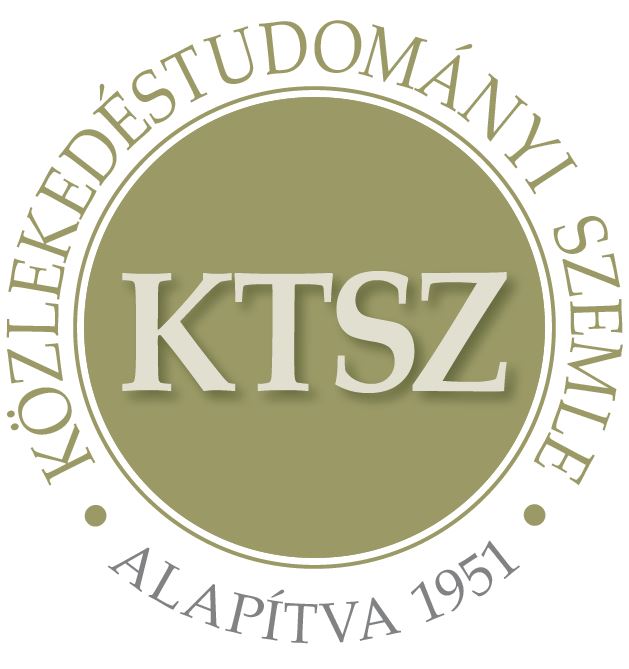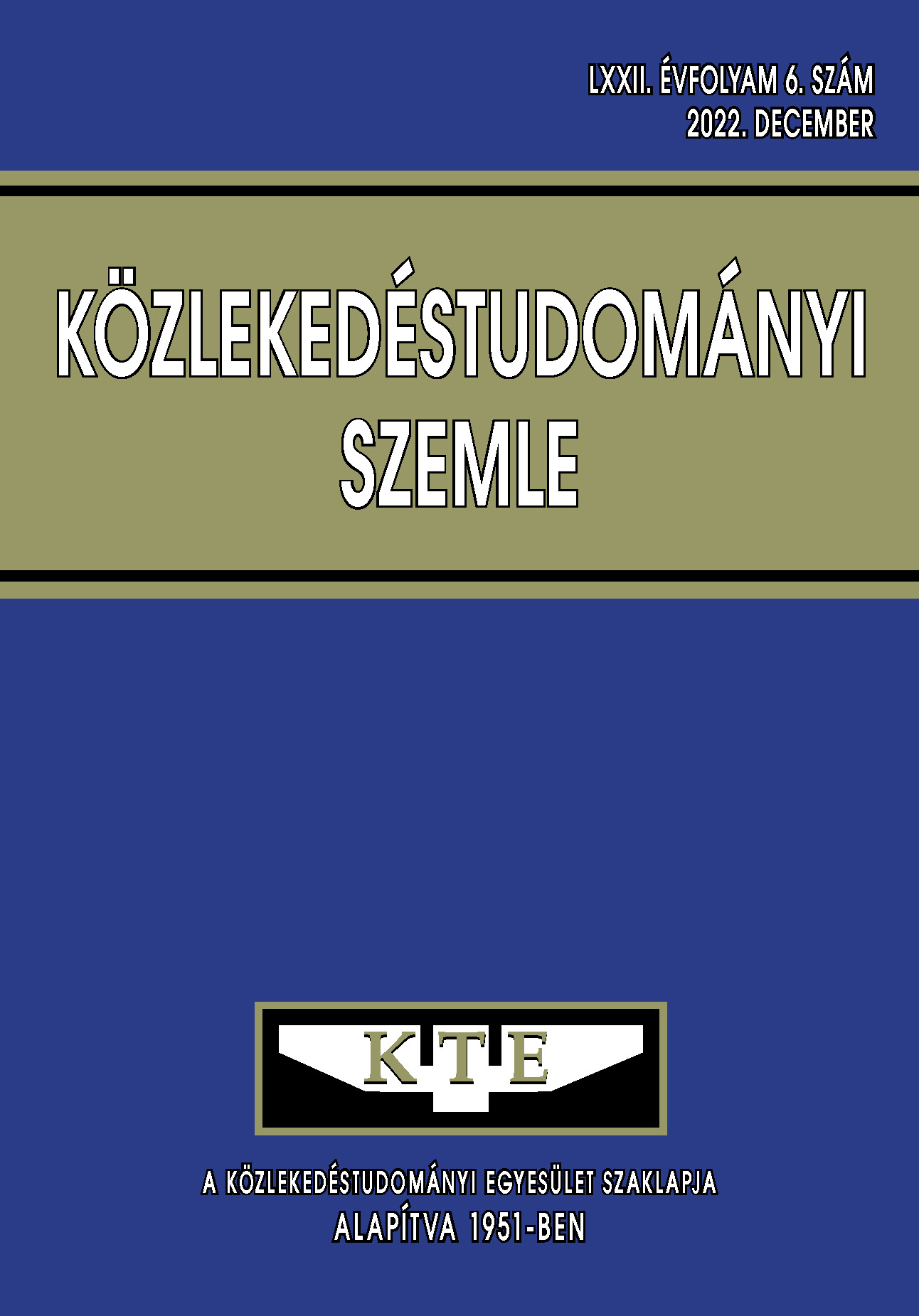Possible uses of data from the HU-GO electronic toll system for an automatic incident detection algorithm
Abstract
The basic task of the National Toll Payment Services PLC (NÚSZ) is to sell road use authorization and to verify the existence of such autorizations and to provide related services. Traffic monitoring on the toll road network is carried out by means of nearly 130 fixed toll gates equipped with cameras and laser scanners, and video equipment mounted on vehicles. A large amount of detailed data is generated during the verification of the right to use the road, which can be used for traffic management and automatic incident detection (AID) algorithms. In this paper, the different AID methods are described, followed by the tuning methodology of the ARIMA model-based algorithm and the examination of the effectiveness of different versions tested with real data.
References
Horváth, M.T., 2012. Automatikus incidensfelismerő algoritmusok összehasonlítás autópályán, BSc szakdolgozat
Martin, P.T., Perrin, J., Hansen, B., Kump, R. and Moore, D., 2001. Incident detection algorithm evaluation. Prepared for Utah Department of Transportation.
Parkany, E. and Xie, C., 2005. A complete review of incident detection algorithms & their deployment: what works and what doesn't.
Mahmassain, H.S., Haas, C., Zhou, S. and Peterman, J., 1999. Evaluation of incident detection methodologies (No. FHWA/TX-00/1795-1). University of Texas at Austin. Center for Transportation Research.
Articles published electronically are open access (OJS), freely available online and can be downloaded. Authors of articles are not charged any publication or publishing costs (APC). Users have the right to read, download, copy, print, and search the articles, or share the full text with a link.
Authors must declare that their submission has not been previously published in another journal, that financial support has been acknowledged, and that the list of references is complete and accurate, including specification of URLs and DOIs (if available). When submitting a draft article, each author approves the submitted version. Authors guarantee that the article is their original work. Authors are required to participate in the peer review process, follow the advice of reviewers, meet the prescribed deadlines, and, if any, withdraw the submission or correct errors.
All submitted articles are subject to peer review, where the editors request an independent evaluation from at least one expert, ensuring that the reviewer(s) have no conflicts of interest with the authors. The final decision is made by the Editor-in-Chief, who takes into account the evaluations and the suggestions of the editors. The editors and reviewers treat the submission confidentially.
The publisher and editors are committed to maintaining high ethical standards and to preventing publications that involve research misconduct. They follow the COPE guidelines on such ethical issues.
The authors retain copyright and grant the journal the right of first publication under the Creative Commons License (https://creativecommons.org/licenses/by-nc-nd/4.0), which allows others to share the work, while acknowledging the authorship of the work and the first publication in the journal.
The journal archives all published articles, and the journal's owner, the Hungarian Society of Transportation Sciences, will continue to operate the database even if the journal ceases to be published.















